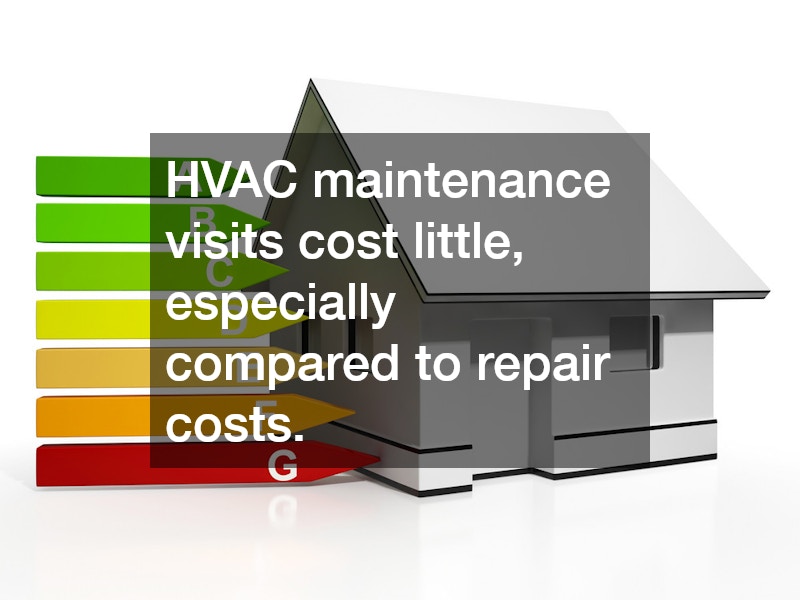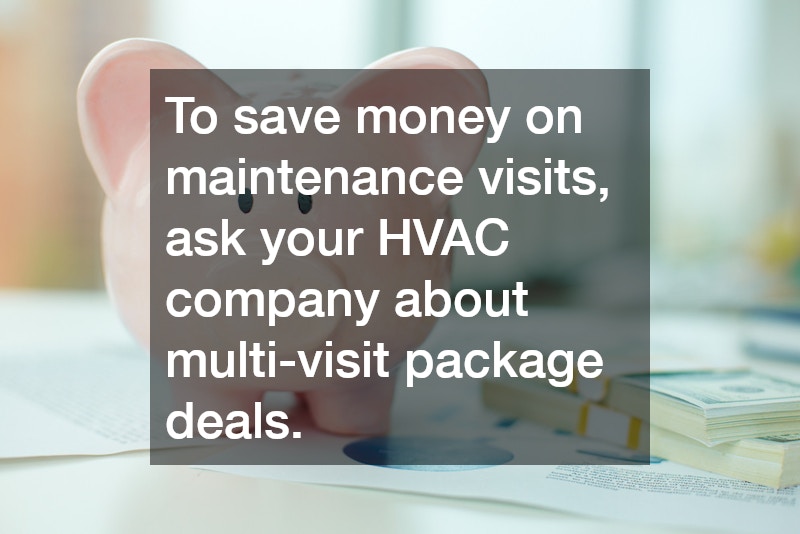
Not all heat, ventilation, and air conditioning (HVAC) systems use the same technology. Many HVAC repair services specialize in the kind of HVAC system they service. If you purchased an HVAC that uses variable refrigerant flow (VRF), you’ll need to find a service provider that maintains and services VRF HVAC units.
HVAC manufacturers use VRF technology in commercial and residential HVAC systems. If you bought a home VRF system, you’ll need to hire a residential HVAC contractor. Residential VRF systems vary that much from larger, heavy-duty commercial systems.

Your VRF system services include the same frequency of maintenance visits—every six months. Every HVAC system needs an examination before hot weather starts and before winter’s cold sets in. This set of maintenance checks includes filter changes, fluid checks and top-ups, ventilation and duct cleaning, and mechanical parts examinations.
Reasons for Scheduling HVAC Maintenance Visits
HVAC maintenance visits cost little, especially compared to repair costs. In the U.S., the average cost of an HVAC tune-up, as these visits also get called, ranges from $75 to $200. Compare that to the average repair costs of between $2,000 and $3,000, according to Bob Vila’s This Old House blog. To save money on maintenance visits, ask your HVAC company about multi-visit package deals. Some service providers offer three- and five-year maintenance plans that let you lock in the current rate of a tune-up, thus avoiding the effects of inflation during those years.

The proper installation and maintenance of a home heating, ventilation, and air conditioning (HVAC) system are important for reasons other than costs and efficiency. An air heating and air conditioning system that does not run properly can be a threat to human health and safety.
One of the most serious threats comes from carbon monoxide. This colorless and odorless gas may not be detected until its effects have overcome the occupants of a residence. Risk to both life and property comes from fire, which can result from the failure of the electrical components of an air heating and cooling system.
The proper functioning of an air conditioner and ventilation system is necessary for maintaining a healthy climate. Inadequate filtration can create or worsen allergies and other respiratory conditions. Air that is excessively dry can also cause health problems, while an atmosphere that is excessively humid can produce molds and have other adverse effects.
The physical well-being of you and those around you is a good reason to make sure that your air conditioning ventilation system is working, and to consider ac repair when it is needed.

Most homeowners do not spend a lot of time thinking about their heating, ventilation and air conditioning (HVAC) system but it is a very important part of the home. Heating and cooling makes a lot of the United States habitable. The problem for many people is that nearly half of the energy use in a home is from the heating and cooling system. The good news is that there are things you can do to make your home more energy efficient and cut your utility bills at the same time. This tips will help you lower your energy usage.
- Some heating and cooling systems use more energy than others. If you have not upgraded your system in a number of years or if you do not know how old it is, it might be time to have the HVAC contractor to look at your system. You can lower your air conditioning costs by between 20% and 50% by upgrading your air conditioner system. if you get an Energy Star rated appliance you will save more on your air conditioning bills.
- Make sure you place your air conditioning unit in the right place. You should put it in a shady space that does not get too much direct sun. Pay attention to it and keep it free of debris such as trigs and leaves. You need it to be able to vent properly for it to be as efficient as it can be.
- Have your het pump checked. You should make sure you have a BGE Smart Energy Program rating. These have a much better heating seasonal performance factor (HSPF) and seasonal energy efficiency seer (SEER) ratio than older models of heat pumps and will need a lot less energy. They can save you between 8% and 20% from your heating bill.
- The majority of American households are heated with natural gas. At least 57% do. The problem is that 25% of all of these homes have furnaces that are over 20 years old. If yours is old, it might be time to get an upgrade. Look for models that have annual fuel utilization efficiency (AFUE) rating of at least 92% and you can take 15% off of your heating bill.
- Work with a local HVAC technician to provide maintenance. Proper maintenance of your heating and cooling system will make it run more efficiently and cost you less money on your bills. Have a regular schedule for when your ducts can be checked and cleaned as needed and you will do yourself a lot of favors.
- Check your air filters. Depending on your model and the conditions in which you live, you may be able to check the filters less often. Some people can get away with doing it every three to six months but other homeowners need to check at least once a month. Get to know your system and you get the right schedule. When the air filters are clogged or dirty, the system runs less efficiently. Change it when you see it is dirty or clogged. It is much cheaper to buy new air filters that to replace your unit. Also, clogged air filters can be a fire hazard.
- Upgrade your thermostat. If you have an older unit, you should think about upgrading to a programmable one. You can even get units that have WiFi and can be checked and monitored and changed when you are away or at work. There are units that will allow you to set the settings in different parts of your home so you do not waste money heating and cooling parts of the home where no one is.
- Place your thermostat away from heat sources. These can be ovens, lights, any equipment that gives off heat. If you do not, the thermostat will think that your house is much warmer than it is and the unit will keep trying to cool to your desired temperature.
- Check your weatherstripping. You want to provide heating and cooling for your home but the neighborhood. Make sure your windows are not letting your heating and cooling out that way.
If you follow these steps and work on your home, you may surprised at your savings.


